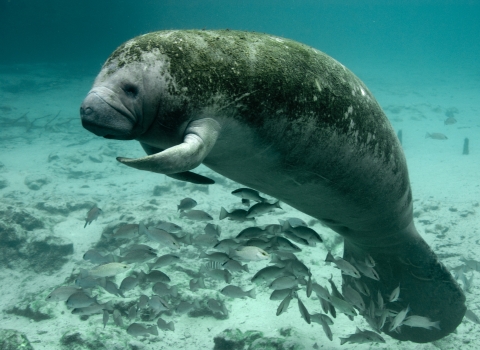Based on the best scientific and commercial data available, the U.S. Fish and Wildlife Service is listing seven freshwater mussels found in Central Texas under the Endangered Species Act and designating 1,577 river miles of critical habitat for the species in the Colorado, Guadalupe, Brazos and Trinity river basins.
The six species receiving an endangered listing are the Guadalupe fatmucket, Texas fatmucket, Guadalupe orb, Texas pimpleback, Balcones spike, and false spike, while the Texas fawnsfoot is receiving a threatened listing.
Once abundant throughout the four river basins, the seven Central Texas mussel species have declined in recent years due to reduced water quality and habitat destruction.
“These unique freshwater mussels are found nowhere else in the world but in the rivers and streams of Central Texas,” said Amy Lueders, the Service’s Southwest Regional Director. “Saving these mussels isn’t just about preserving the biodiversity of the region, it also helps protect the waterways that people rely on for water and recreation. We are committed to working with local communities to ensure they have the tools they need to protect and recover these imperiled species.”
The ESA listing of the freshwater mussels will support both new and current conservation efforts for the species. For the threatened Texas fawnsfoot, a 4(d) rule will apply to provide for the conservation of the species.
“Creative collaboration with Central Texas river authorities has led to some ground breaking conservation actions making it possible to list the Texas fawnsfoot as threatened,” Lueders said. “That's important because it opens the door to more flexibility for solutions that reduce the threats to these mussels while boosting water quality in the watershed.”
Water authorities that have demonstrated their commitment to conserving native freshwater mussels by developing voluntary Candidate Conservation Agreements with Assurances (CCAA) with the Service include the Brazos River Authority, Lower Colorado River Authority, Trinity River Authority, and Tarrant Regional Water District. The Service is also developing a Habitat Conservation Plan (HCP) with the Guadalupe-Blanco River Authority.
The 4(d) rule for the Texas fawnsfoot outlines prohibitions that are necessary for the conservation of the species along with exemptions for activities determined to have minor or temporary effects on Texas fawnsfoot populations, including habitat and population restoration, surveys, and some water management activities.
The critical habitat designations identify areas that are particularly important for the conservation of each of the seven species. Designation of critical habitat does not affect land ownership, establish a refuge or preserve, and has no impact on private landowners taking actions on their land that do not require federal funding or permits.
Species listed as endangered or threatened under the ESA also benefit from conservation measures that include recognition of threats to the species, federal protection from harmful practices, and implementation of recovery actions.
The Service recognizes that future conservation of the Central Texas mussels only happens with the continued support of a wide-range of partners. We have been and will continue to work with state agencies, academia, federal agencies, river authorities, landowners, and others on conservation efforts for the seven Central Texas mussels.
Research focused on helping improve the understanding of the species has been funded by the Office of the Texas Comptroller, Texas Parks and Wildlife Department, the Service, river authorities, and others. Work is also underway to evaluate methods of captive propagation for the Central Texas mussel species at the Service’s San Marcos Aquatic Research Center, Inks Dam National Fish Hatchery, and Uvalde National Fish Hatchery.
The final listing determinations, 4(d) rule, and critical habitat designations will publish in the Federal Register on June 4 and will be effective 30 days after publication.
The Endangered Species Act of 1973 is the most significant piece of endangered species legislation and is considered one of the world’s most important conservation laws. The ESA provides for the protection of ecosystems, the conservation of endangered and threatened species, and the enforcement of all treaties related to wildlife preservation. The ESA has been highly effective and credited with saving 99% of listed species from extinction. Learn more at the Service’s Endangered Species Act 50th Anniversary website.
Frequently asked questions: Listing, Critical Habitat, and 4(d) Rule for Central Texas Mussels.







